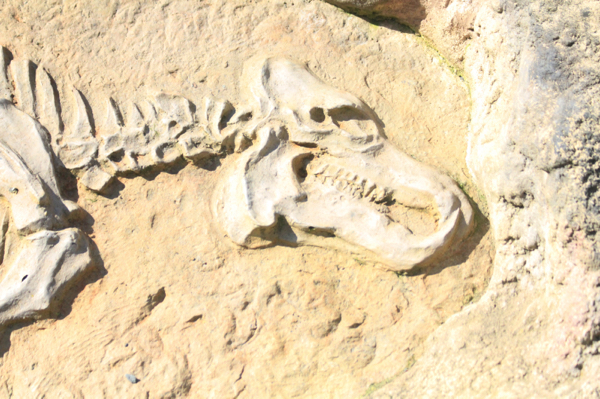
As humans became more effective hunters, megafauna became even more vulnerable
Archaeological evidence, such as traps for large animals and isotope analysis of ancient human bones and spear points, indicated that early humans hunted and consumed large mammals. "Early modern humans were skilled hunters capable of reducing large animal populations. These large animals were particularly vulnerable due to their long gestation periods, few offspring and slow maturation," Svenning said. The analysis showed widespread human hunting of large animals like mammoths, mastodons and giant sloths across the globe. These species went extinct at different times and rates worldwide. In some areas, extinction happened quickly, while in others, it took over 10,000 years. However, it always occurred after modern humans arrived or, in Africa's case, after significant cultural advancements. Species vanished from all continents except Antarctica, across various ecosystems–from tropical forests and savannas to Mediterranean and temperate forests and steppes, and even arctic regions. "Many extinct species thrived in different environments, so their extinction can't be explained by climate change alone. Most species lived in temperate to tropical conditions and should have benefited from the warming at the end of the last ice age," Svenning explained. The researchers emphasized that the extinction of megafauna has had significant ecological impacts. Large animals played a crucial role in ecosystems by affecting vegetation structure, seed dispersal, and nutrient cycling. Their disappearance has led to major changes in ecosystem functions and structures. Svenning noted: "Our findings underscored the need for active conservation and restoration efforts. Reintroducing large mammals can help restore ecological balance and support biodiversity, which developed in environments rich in megafauna." (Related: Endangered reptile species being sold as pets could be in danger of extinction warn scientists.) For more related stories, visit Extinction.news. Watch the following video entitled "What caused the Pleistocene extinctions?" This video is from the Daily Videos channel on Brighteon.com.More related stories:
Is the world undergoing an extinction-level population COLLAPSE? The very survival of the human race may be at stake. EXTINCTION approaching: Glowing "blue tears" in China’s seas are TOXIC and steadily growing every year, warn scientists. Extinction imminent: Last pod of killer whales in the U.K. will die because toxic chemicals have made the females sterile. Noise pollution from offshore wind turbines could lead to the EXTINCTION OF WHALES. Sources include: DailyMail.co.uk Phys.org Brighteon.comChina is beating the U.S. in the race for fusion energy
By Richard Brown // Share
New AI-powered in-vehicle camera technology can assess driver intoxication
By Laura Harris // Share
Mandating COVID shots ‘one of the greatest mistakes,’ former CDC chief says
By News Editors // Share
Ivermectin’s neuroprotective properties could protect against damage from EMFs, vaccines
By Ethan Huff // Share
GRID DOWN: California utility provider cuts power off to thousands amid wildfire threat
By Cassie B. // Share
A new brink: Trump’s strike warning meets Iran’s vow of retaliation
By willowt // Share
Modern science validates turmeric's ancient anti-inflammatory power
By willowt // Share
HHS freezes child care funds to 50 U.S. states amid Minnesota fraud review
By lauraharris // Share
U.S. approves $328.5 million arms sale to Taiwan amid rising tensions with China
By kevinhughes // Share











